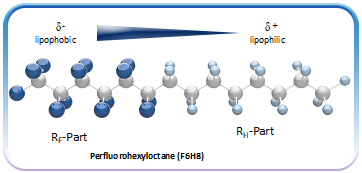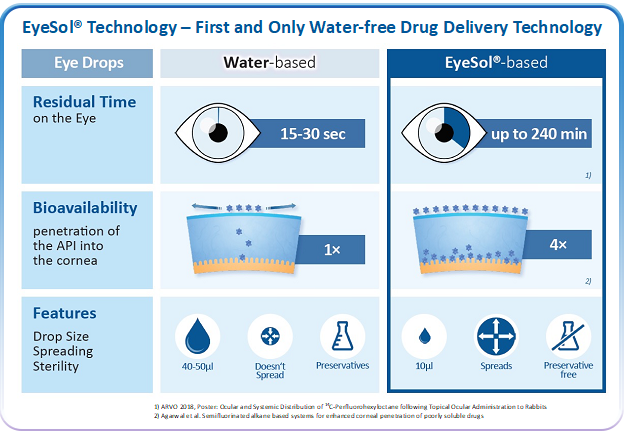Technology
About EyeSol®

First and only Water-Free Technology
Technology clinically validated, safe, and well tolerated
- Contains perfluoro- and hydrocarbon segments
- Physically, chemically, and physiologically inert
- Colorless with low surface tension
- Does not undergo catabolism nor metabolism
Topical eye drops are the mainstay of therapy for many ocular diseases, but features of existing water-based formulations create issues that can limit product efficacy and safety. Traditional aqueous vehicles for topical ophthalmic medications suffer from a number of limitations:
With water-based ophthalmic preparations, the typical dispensed drop size is 40 to 50 µL. This large volume exceeds the external eye’s reservoir capacity, resulting in spillover. The high surface tension of the aqueous-based drop further hinders its spreading on the ocular surface. In addition, the application of an aqueous-based eye drop can activate the defense mechanism of the eye with rapid blinking after instillation and tear secretion. Together these factors reduce the residence time and contribute to the low bioavailability of conventional topical ophthalmic medications, which is reported to be as low as 1 to 10%.
Another limitation of using aqueous vehicles as a topical drug delivery platform relates to the fact that up to 60% of today’s new chemical entities are lipophilic compounds or large molecules that have poor water solubility. The addition of oils and/or surfactants into aqueous-based formulations offers a common strategy to address this problem, but the presence of these agents can lead to visual disturbance and tolerability issues. Tolerability can also be affected by preservatives that must be included in aqueous-based ophthalmic products that are packaged in conventional multi-dose containers.
EyeSol® is the first and only water-free technology for ocular drug delivery. It distinguishes from water-based technologies by a host of physical characteristics that translate into enhanced stability and bioavailability.


